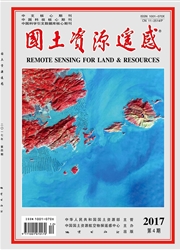

 中文摘要:
中文摘要:
黄河中游地区荒漠化形势十分严峻,为了更好地掌握该区荒漠化变化情况与影响因素,利用全国生态地质环境遥感调查与监测项目提供的1975年、1990年、2000年、2007年4期荒漠化遥感解译变化统计图,提取黄河中游地区32a来的荒漠化变化信息,利用MapGIS6.7软件平台对研究区荒漠化情况做了统计分析,并利用SPSS软件对荒漠化的影响因素做了主成分分析,探讨黄河中游地区荒漠化的变化特征以及不同影响因素在荒漠化发展中的作用。结果表明:近年来局部地区荒漠化有所缓解,2007年总荒漠化面积较1975年减少了2.43×103km2;但总体形势依然严峻,荒漠化面积超过研究区总面积的60%。风成地貌类型上的荒漠化最严重,占研究区总面积的43.1%。短期内,人为因素对荒漠化发展的影响占52%,气候因素的影响占48%,也就是说,相对恶劣的气候条件和不断增强的人类活动共同影响着当地荒漠化的发展。
 英文摘要:
英文摘要:
The situation of the desertification in the middle reaches of the Yellow River is critical. In order to understand the dynamic characteristics and influencing factors of the desertification, the authors analyzed the remote sensing images from 4 different periods ( i. e. , 1975, 1990, 2000, 2007 ) in the study area and performed the statistical analysis by means of MapGIS 6.7 and SPSS. Principal factor analysis was employed to find the main factors influencing the desertification. The results show that from 1975 to 2007 the area of desertification in some areas decreased by 2.43 × 103 km2, but the total area of desertification still accounted for over 60% of the total study area. The geomorphic type played an important role in the desertification. The desertification area of wind - borne landforms accounted for 43. 1% of the study area. In a short period, desertification caused by human activities and villainous climate in the middle reaches of the Yellow River accounted for 52% and 48%, respectively.
 同期刊论文项目
同期刊论文项目
 同项目期刊论文
同项目期刊论文
 期刊信息
期刊信息
